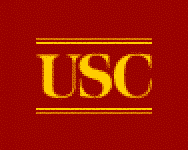 Interaction Lab
Interaction Lab
University of Southern California

Raul Correal
| Home | Research | Publications | Pictures | Resume/CV | Contact |
|
My principal field of research is Assistive Robotics. I've been a researcher at the Robotics Lab at the University Carlos III of Madrid during 4 years.
The assistance of disabled,
elderly and persons with special needs become to be one of the
most important service applications of the robotic systems in
the near future. Humans care and service demands an innovative
robotic solution to make easier the day-life of these people in
home, workplace and institutional care environments. In this way
the quality of life of the important part of population improves
toward their social integration. http://roboticslab.uc3m.es/roboticslab/proyecto.php?id_proy=3
At the interaction lab at USC, where I've been researching during 1 year, I've been working in the tourguide project. This is a robot in charge of welcome visitors and drive them through the lab explaining what's going on in the lab, projects under development, researchers, etc. Some of the technology involved in this project is: - Navigation: to orientate itself in the lab and follow a specified route to cover all the hot locations within the lab. - Shapes and blobs recognition: the navigation is done following some symbols attached on the ceil. Thanks to the camera installed on the robot, it can track those symbols and recognize them. They have a double use, on one hand the robot will follow the symbols, that way we can specify what path it should follow. On the other hand there are different symbols with different meanings, so the robot will perform a different task depending on the symbol above him in the ceiling. This is possible because the main structure of the lab is static, it doesn't change. - Obstacle avoidance: thanks to the sonar belt attached to the base (a commercial Pioneer), it can avoid colliding with any other robot, object or visitor present in the lab. Although the lab is kind of a static environment, some objects are relocated frequently and people are always moving around. - Speech synthesis: one of the more natural interaction ways is though speech. We incorporate in this robot the speech capacity, so it will show the lab to visitors coming explaining via voice the projects going on and the researchers work in the lab. - Gestures: On top of the mobile base we mounted "Sparky", a robot from Disney. Sparky is a simple robot but very suitable for interaction. The mobile base navigation and obstacle avoidance, speech synthesis and Sparky's gestures will be combined to offer a very natural and fun experience for visitors. To learn more about this project go to http://robotics.usc.edu/interaction/?l=Research:Projects:greeter:index
|